This past week, my running felt normal. Or better, I felt normal. I ran steadily along the San Miguel River path at the base of the canyon below Deep Creek Mesa, anxieties and negative chatter shushed by the white noise of the raging river swollen with snowmelt. As my stride found a rhythm on a soft red-rock dirt path, I finally ceased an impatient habit of counting minutes until I would allow myself to walk. My mind unspooled instead with mundane but motivating thoughts having to do with unpacking boxes in our new home and updating my clients’ coaching plans.
Early this week, I ran steadily from home to town, met a group, and returned on a trail alternately hiking and running—more than 16 miles total—not fast, but not too tired. Just fine.
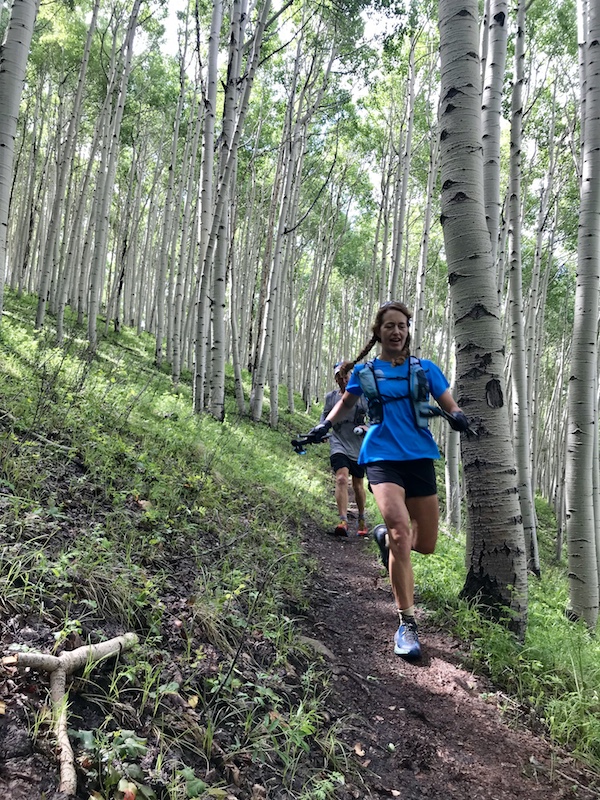
This is news to me because I drafted the following blog post several weeks ago and let it sit in the draft folder. I tried to ignore the unsettling emotions it stirred, including embarrassment that I felt like a loser for feeling so fatigued and overly emotional. I kept telling myself how content I should feel with my new life, having moved into the dream home we spent several years planning and building. Instead, I felt unsettled, unproductive, grumpy and drained.
This is what I wrote a few weeks ago, in late June, my funk accentuated by following the Western States 100 coverage and feeling so “out of it” as a runner. I’m sharing it now because it shows the ebb and flow of strong, agitated emotions during midlife transitions—and it’s a reminder that a normal rhythm and peace of mind usually return with time and patience.
A Moody Mess
I’ve been avoiding blogging because I feel like neither a runner nor a writer. Mostly, I don’t want to sound like a downer or ungrateful when my life objectively is highly enviable.
But I have to admit: I feel like shit, meaning achy and discouraged, physically and mentally. Running feels like a chronic struggle, but I keep at it out of habit and hope that it’ll restore my wellness, refresh my thoughts and anchor my daily routine. I’ve been beating myself up about feeling so enervated and moody, even as I tell myself to practice self-compassion.
Let me describe one recent run as an example of the emotional state I’m in.
I took a break from following the early stages of the Western States 100 on June 29 to run around Woods Lake, a special destination 20 miles outside of Telluride. Two mountains that we gaze at when looking southward from our new home, Wilson Peak and the Lone Cone, cradle the aspen- and pine-ringed lake. I wanted to reconnect not just with the place, but with the runner I was three years ago when I ran Western States.
My folks used to camp for weeks at a time at Woods Lakes during summertimes before I was born. My dad took me to Woods Lake to fish and camp when I was a little girl, and we roasted hot dogs and marshmallows on skewers cut from aspen branches. My grandpa and his brother used to fish there, climb peaks, and ride horses while driving cattle to their ranch nearby at the base of the Lone Cone.
Long way of saying, it’s a magical place. I planned to run part of the smooth and easy Fall Creek Road to the lake, then circle the whole area on rugged trails, intending my mileage to hit the low 20s.
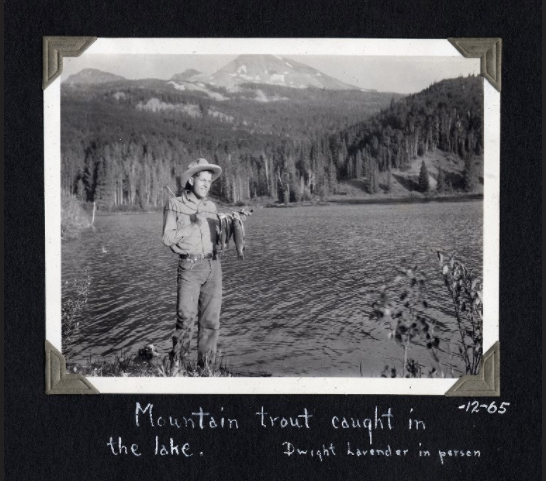
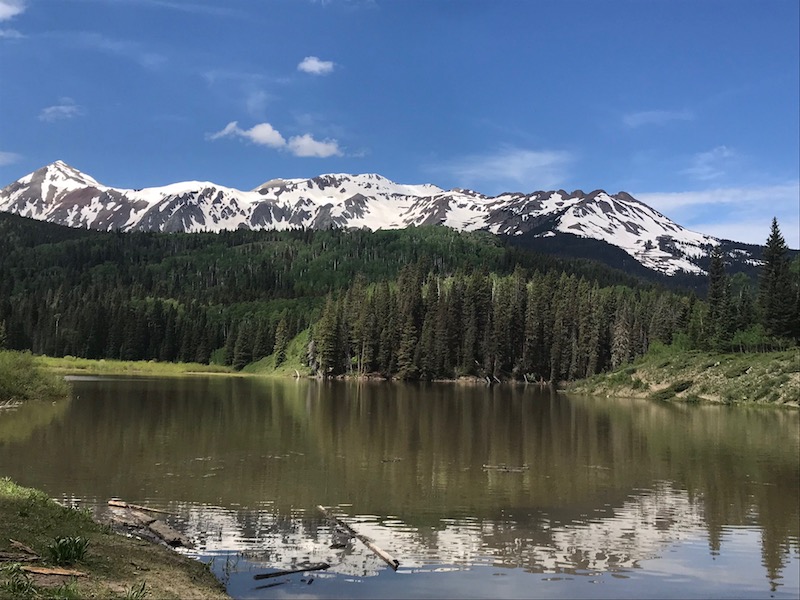
From the moment I started running the first easy portion of the road, I felt “off” and weak. I let myself take walking breaks and tried to find my “easy” pace and regain some flow. But any running felt like a struggle, spiking my heart rate and fatiguing my legs. I can’t blame the altitude entirely; sure, the air is thin at the route’s elevation, 8,000 to 10,500 feet, but I’ve been living here for two months and should be adapted.
When I transitioned to single track, I stopped attempting to run, except on the downhills. I only wanted to hike. I considered, “Maybe I’m a hiker now, not a runner.” Hiking felt pleasant, so I hiked, but I battled inwardly to enjoy the views because of the gnawing sense of failure from feeling unable or unwilling to run the runnable segments. I couldn’t help pondering if my time as a runner is approaching its shelf-life date.
Contemplating aging—both my kids’ aging, as they transition to adulthood, and my own—I thought about my ancestors and wished my dad were still around. Two days earlier, on what would have been his 85th birthday, I had sat in front of his gravestone in Telluride’s cemetery and wept, missing him more now, six years after his death 2013, than when he first passed away.
It’s safe to say, one month after turning 50, I’m sensing mortality and the passage of time with heightened emotions, no doubt hormonally exaggerated by perimenopause. (My cycle, like the weather in this age of climate change, has gone to extremes in terms of severity. It’s unpredictable, strong and stormy, and it affects my mood and energy for nearly half of each month.)
I want to celebrate this new life chapter and just feel happy, pure and simple, but fatigue and melancholy color daily life. When I visit my mom weekly in her assisted-living home in Montrose and confront her rapidly diminishing mind (she now struggles to remember and write her full name, and she looks at me with recognition but uncertainty, trying to place how she knows me), I realize the degree to which I fear aging and slowing down, and that fear hampers my ability to celebrate this life as it is, right here, right now.
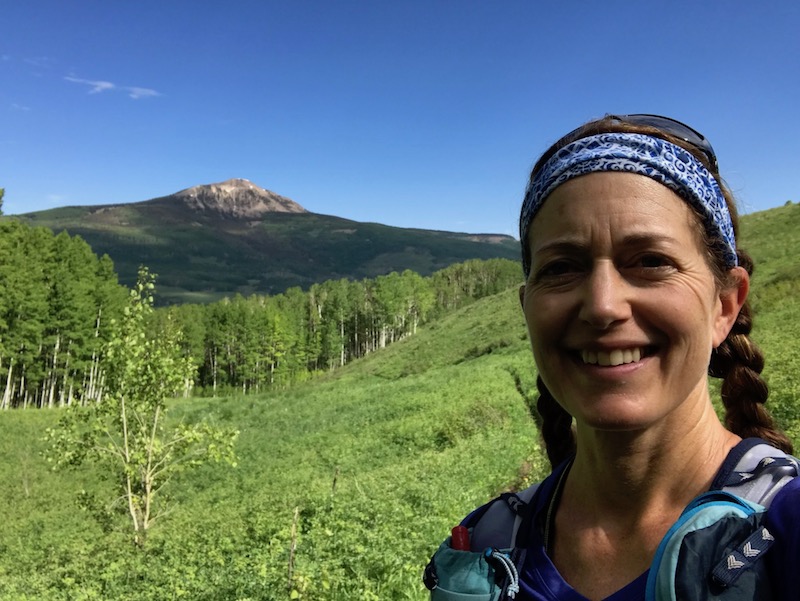
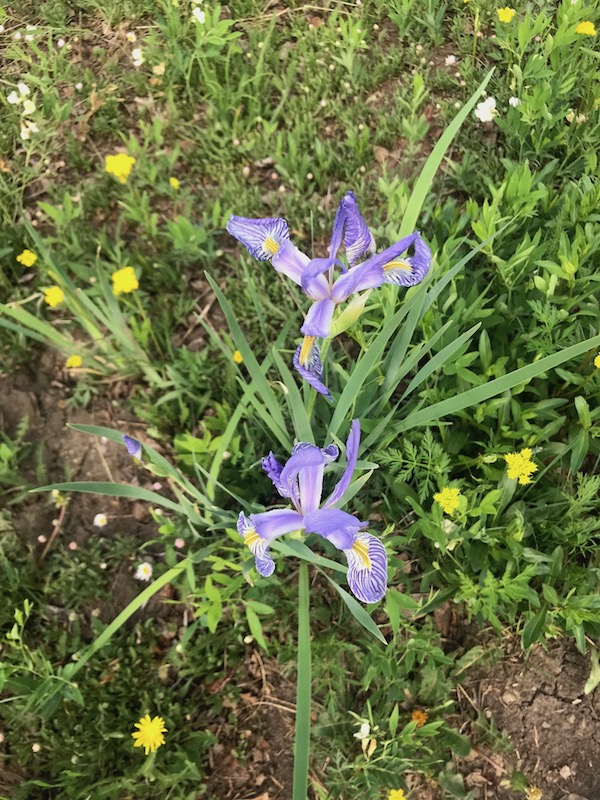
When I returned to the smooth dirt road segment, I willed myself to run the final couple of miles back to my truck, but I had to put in earbuds and turn on some hard-charging music to turn off my thoughts and get my legs turning over as a runner. I quit after totaling 13 miles and 3.5 hours, cutting my long-run plan short.
The whole experience left me sad, which is so silly, I know! Why am I sabotaging my ability to enjoy 3.5 hours in this natural beauty? What’s my problem?
Two Tumultuous Months
As I started off saying in the intro, I’m feeling better and more normal now. When I gaze out the window at our horse grazing on a swath of meadow that we can call ours, or I look up at the century-old hand-hewn beams that form the timber framing of our home, I think, Wow. We did it.
But since we’re still not unpacked and I don’t have any regular routine yet, my happiness feels manic and disorganized, and I’m always chasing scraps of mental notes, wondering where I put things, what day is it and what am I supposed to be doing. I laugh or shout too loudly, and then I cry too easily.
The coach in me knows that the fatigue I’ve felt on runs has a lot to do with life stressors, and athletes shouldn’t underestimate the toll that real-life transitions such as moving, career changes, divorce or other life milestones can take on one’s energy. Plus, there’s the local saying, “Blame it on the altitude.” Everything from fatigue to farting to disturbing dreams to culinary disasters can be blamed on the thin air. I’m living at 9000 feet, prompting an adjustment physiologically.
I can’t overlook (though I tend to do just that) that I fast-tracked recovery from an accident (described below), so my body probably has been telling me to slow down and take time to heal. The fact I started hiking, then running, less than two weeks after that accident when the doctor said it would take some six weeks to heal probably speaks to an impatient mindset. And the fact that I now forget to feel gratitude for being able to run, when I could have been more seriously injured, also highlights my tendency to focus on the present and immediate future, rather than on the big picture.
To refocus on “the big picture” and remind myself of what’s happened during this transition period since I moved permanently to Colorado and last blogged in May, allow me to summarize the past couple of months.
Through May, Morgan and I managed tiny-house living in the Airstream as the house construction wrapped up while coping with epic snow and mud outside our door. Simple things, such as going outside to feed the horses or getting in the car to drive to town, became unexpected time-consuming challenges, as the quagmire of snow turning to gooey mud everywhere complicated the simple act of getting around. Welcome to mountain living, I told myself.
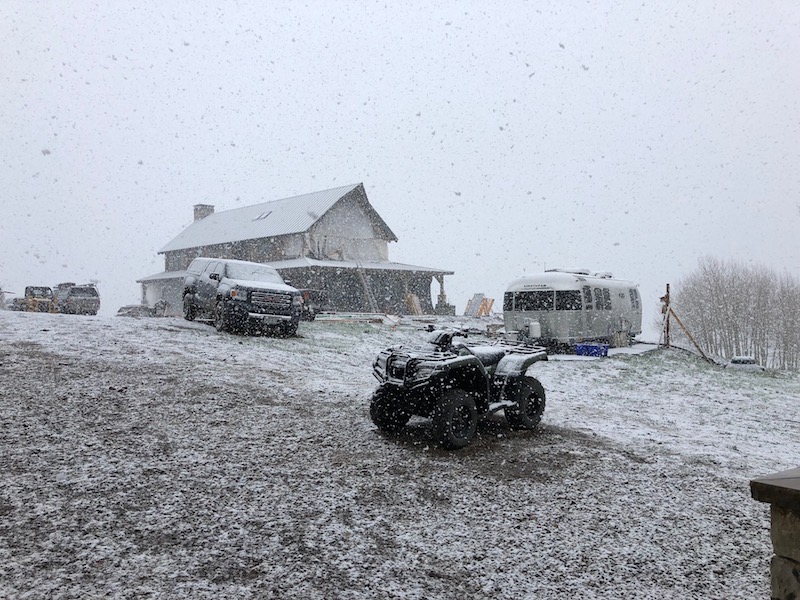
Also, I turned 50 and tried not to think too much about it (until at certain times, like on that Woods Lake run detailed above, I thought deeply about aging and mortality and how it scares me).
I peaked in training for the June 14 Bighorn 100 as best I could, getting in decent long runs lasting the better part of a day. I got all my travel arrangements, crew plans and gear ready for the trip to Wyoming for the race. I kept coaching as many clients as I can handle in the 10 or so hours a week I devote to that part-time work. I tried to plug into life in our new permanent year-round home of Telluride, attending Mountainfilm Festival and talks in the library. I rekindled a routine I began last summer of going to a local gym two mornings a week for a high-intensity interval training class, combined with an easy shorter run on those days, for good-quality strength conditioning and cardio.
By late May, in spite of the strong weather, I was thinking, I love it here—this is home. I’d wake in the morning to views of mountains, groves of aspen and herds of elk, marveling at this land that I have loved ever since I was a little kid playing here. I savored a sense of belonging and connection that stretches back generations due to family roots—a feeling I never experienced in Northern California.
Then on May 30, Morgan and I traveled back to Thacher School in Ojai, in Southern California, for my son Kyle’s 18th birthday and graduation ceremony. That weekend was an emotional and logistical roller coaster, moving him out of his boarding school and saying goodbye to the school and town where I grew up and also went to school. I couldn’t believe my youngest is heading to college, and my 21-year-old daughter is almost entirely on her own, living and working in LA this summer. Empty-nesting—wanting to draw my kids closer just as they are about to fly off—did a number on my head. Add to that a late-night training run combined with grad-night party hosting, and I felt exhausted from that weekend.
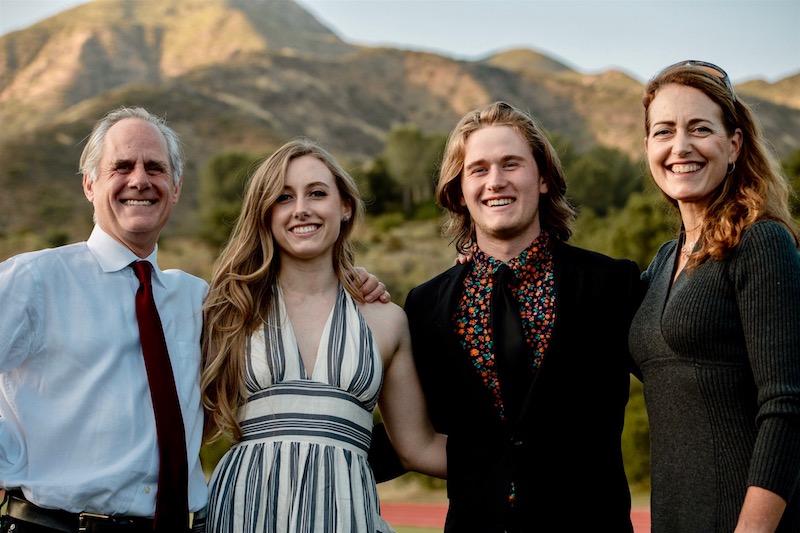
I returned to Colorado by myself for a week, planning to taper and get totally ready for the June 14 Bighorn 100 while my husband and son traveled to the Bay Area for a week. Then the next day—Monday, June 3—I made an impulsive decision to ride the neighbor’s horse after I exercised our horse. That one ride torpedoed all my careful training and planning.
The horse, who had not been under saddle in many months, bucked like a wild bronc, forcing me to eject from the saddle and land hard on my backside. (Note: It’s not the horse’s fault; I should have warmed him up properly!) I couldn’t get up unassisted and had to ride to the town’s medical center in an ambulance.
The doctor said I probably couldn’t run for at least six weeks, because I fractured the transverse process (the “wing” on the L4 vertebrae) and traumatized the muscles that attach there. The lumbar Xray also revealed not-insignificant arthritis in my lower back (no wonder my back gets sore and stiff on long runs). Initially I held out hope I could still go to Wyoming and attempt the Bighorn 100, but since I experienced intense pain that first week from basic activities like getting dressed or getting in the car, it became obvious I couldn’t travel to run the 100-miler.
In a matter of days during the first half of June, I went from feeling in peak health and fitness (heightened by abstaining from caffeine and alcohol pre-race, and storing up on good sleep), to feeling broken, depressed and stressed—stressed by feeling like I had so much I should do, to prepare for moving into our house and helping my son transition to Colorado. I drank too much wine and slept poorly.
But the body has an amazing ability to heal. A week after the accident, I joined a women’s hiking group in town and hiked five slow miles. I started running again a couple of days after that, feeling my left glute and lower back return to normal function.
Three weeks following the accident, I was able to do a 20-mile double crossing of Ophir Pass, with some 4300 feet of vertical gain. I was very slow and careful, hiking more than running, fearful of falling on the snow and chunky rock, but I did it and felt great. Well, maybe not “great”—it wiped me out!—but accomplished.
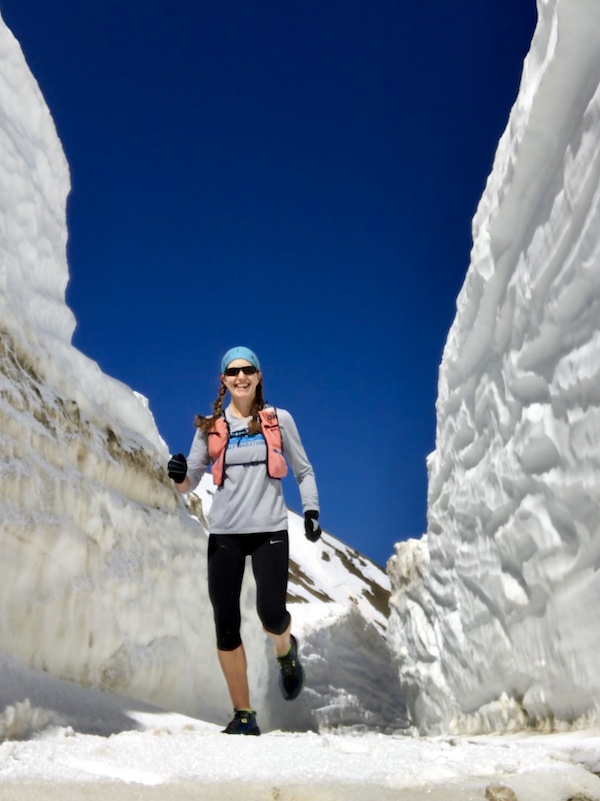
Tomorrow, July 14, I head to Silverton in the early hours to line up at the start of the Silverton Alpine 50K. I have no illusions of being fast or competitive. I’m going there to cultivate steadiness, patience, endurance and ultimately to cover the distance with as positive a mindset as I can muster. It’s important for my training for the Grand to Grand Ultra in September.
I’m really looking forward to tomorrow’s race—not just to covering 31 miles, which includes a 13,000-foot summit on a rocky Jeep road overlooking a mining ghost town. I’m eager to plug back into the ultrarunning scene and see some familiar faces. I feel the flicker of my “old” self—meaning my younger self—and it feels good to feel healthy and normal.
I realize through the course of writing this post that the exaggerated moods and deep fatigue I felt these past two months are normal, too, and I need to accept them less judgmentally. They come with transitions and aging. I’m trying to ride them out.
The other day, when I felt all worked up about something having to do with my son seeming withdrawn and unhelpful while I was yelling at him to help me in the kitchen, I closed my eyes and used the trick I use on airplanes when I feel scared due to strong turbulence: I breathed deeply and pictured myself riding in a high-clearance 4WD truck on a bumpy mountain road. Then I pictured myself sitting in a raft shooting rapids. These visualizations help calm me in a turbulent airplane because they remind me that the vehicle is built to handle the disturbance, and the bumpiness is normal. It was a relief to realize I could calm myself this way in everyday life, too.
I know I need to settle into my new normal, exercise more self-compassion, keep a sense of humor, develop a new routine and go with the flow.
But what I really need to do at this moment is go muck horse manure out the paddock, exercise our horse Cobalt, hike with the dogs up the switchbacks next to our house and do an easy short run along the flat trail next to the irrigation ditch to shake out my legs for tomorrow, then spend time with my son and unpack more boxes, then shower and get things ready to go to Silverton, then check in with my clients about how their long runs went today, and then get back to reading a good book. That sounds like a pretty wonderful normal Saturday, and I feel deeply content and glad I can appreciate it for what it is.
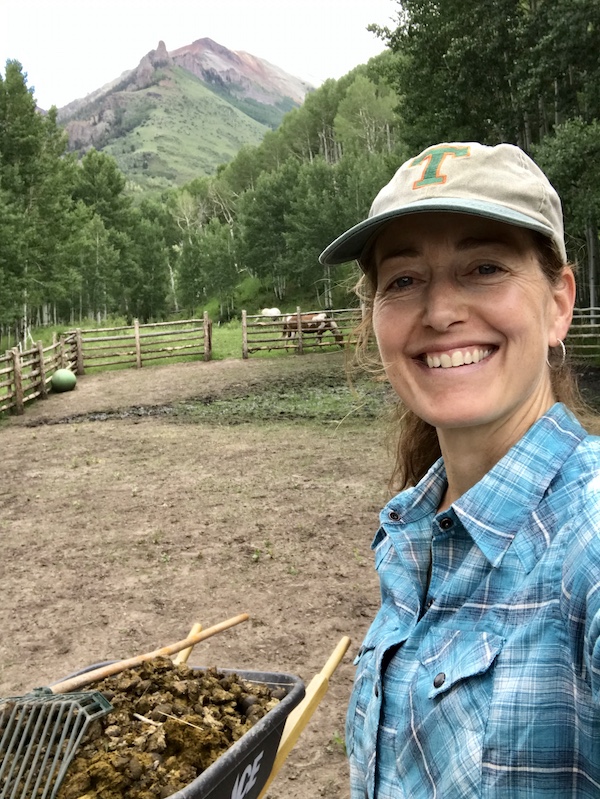
Postscript: If you read this far, thank you. If you want to do something right now that will help make a positive difference in protecting America’s wilderness, and might make you feel better by learning and giving, then I hope you’ll click on my campaign page for the Conservation Lands Foundation. I’m trying to raise awareness and support for this nonprofit’s efforts to protect American’s newest public lands, and I’m a quarter of the way to my goal.

Thank you for your honestly and authenticity. As runners we experience many ups and downs in our sport and I love when you discuss the hard part of being a runner. Most people gloss over it and shy away from talking about how running affects us through life stages and injury etc. I love when writers keep it real. I loved your vulnerability. Thank you for your blog as I’ve been a fan for quite some time.
Sarah, a wonderful window into what you’ve been dealing with lately (P.S. it’s a lot! ). I’m a 58-yr old marathoner and have been asking myself a lot lately “What should I be putting my body through at this age?” I have no peers to compare notes with. And my non-active friends think I’m a crazy outlier, when i feel like if I can do this why can’t most women my age?
Anyway, I think you’re amazing and I’m excited for you as you proceed down this next path on your journey!